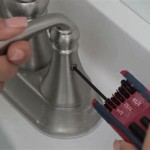Can a Beginner Tile a Bathroom?
Tiling a bathroom can be a rewarding DIY project that adds a touch of elegance and durability to your space. However, it is a task that requires careful planning, attention to detail, and a certain level of skill. While it is possible for a beginner to tile a bathroom, it is crucial to understand the complexity involved and the potential challenges that may arise. This article explores the feasibility of tiling a bathroom as a beginner, highlighting key considerations and providing insights to help you make an informed decision.
Key Considerations for Beginners
Before embarking on a bathroom tiling project, it is essential to consider several crucial factors that can significantly impact its success. These factors include:
1.
Complexity of the Project:
The complexity of your bathroom tiling project will depend on factors such as the size of the bathroom, the intricate design chosen, and the presence of obstacles like shower niches or curved walls. Beginners should start with simpler projects involving a small area and basic tile patterns.2.
Time Commitment:
Tiling a bathroom can be a time-consuming process, especially for beginners. Adequate time must be allocated for each step, including preparation, tile installation, grout application, and cleanup. Underestimating the time required can lead to frustration and delays.3.
Budget:
Budgeting for bathroom tiling involves considering materials, tools, and potential professional assistance if required. Beginners should research tile prices, tools, and labor costs to create a realistic budget and avoid unexpected expenses.4.
Skill Level:
Tiling requires meticulous planning, accurate measurements, and precise cutting of tiles. It also involves understanding the use of tools like tile cutters, grouting tools, and trowels. Assessing your hand-eye coordination, attention to detail, and familiarity with these tools can help determine if you're comfortable taking on the task.Tips for Beginners
If you're determined to tackle your bathroom tiling project, consider these tips to increase your chances of success:
1.
Start Simple:
Begin with a small area, such as a bathroom floor or a single wall, to gain experience. This allows you to practice your skills without taking on a massive project. Choose basic tile shapes and patterns to avoid complexities. It's also advisable to choose large format tiles as they are easier to handle and install.2.
Plan Meticulously:
Before you begin, create a detailed plan, including measurements, tile layouts, and material requirements. This will ensure that you have all the necessary materials and tools on hand and reduces the risk of mistakes. Invest in quality tools such as a tile cutter, a level, and a tile saw.3.
Seek Guidance:
Don't hesitate to seek advice from experienced tile installers, DIY experts, or online resources. They can provide valuable tips and support as you progress. Many online video tutorials can guide you step-by-step through the entire process.4.
Practice Patience:
Tiling requires patience and precision. Avoid rushing the process, as mistakes can be difficult to rectify. Take your time, and don't be afraid to ask for help if needed. Take your time, and be prepared to use a sponge to clean up any excess grout and to work carefully in order to maintain a clean, professional look.5.
Consider Professional Help:
If you're unsure about certain aspects of the project or want to ensure its quality, consider enlisting the help of a professional tiler. They can assist you with complex aspects, advise on material choices, and ensure a smooth execution.Common Mistakes to Avoid
Here are some common mistakes that beginners should avoid when tiling a bathroom:
1.
Skipping Preparation:
Proper preparation is crucial for a successful tile installation. Adhering to the manufacturer's instructions for grout and tile cleaning, removing old tiles, and ensuring a flat and smooth surface are all essential steps in the process.2.
Incorrect Mortar Application:
Applying too much or too little mortar can lead to uneven tile installation and gaps. Use the recommended trowel size for your tiles and apply a consistent and even layer.3.
Improper Grouting:
Grouting is the final step in the tiling process, and it should be done meticulously. Using the correct type of grout for your tiles, applying it evenly, and ensuring proper clean-up are essential for a beautiful and durable finish.4.
Cutting Tiles Without Precision:
Accurate tile cutting is critical for ensuring a seamless and visually appealing installation. Using a quality tile cutter and practicing proper techniques can help you achieve precise cuts.5.
Ignoring Safety:
Tiling involves using power tools and sharp objects; it's crucial to prioritize safety throughout the process. Wear safety glasses, gloves, and other protective gear as needed. Always follow the manufacturer's safety instructions for tools and materials.
A Beginners Guide To Tiling Bathroom

Installing Tile Smart Tips For Beginners

Laying Floor Tiles In A Small Bathroom Houseful Of Handmade

How Hard Is It To Tile A Bathroom Floor Complete Guide

How To Tile A Bathroom Floor For Beginners Making Maanita

Tile Alternative For Bathroom Walls Multipanel

10 And Easy Diy Bathroom Flooring Ideas

How To Tile A Floor Or Wall Beginner S Guide The Created Home

Tiling A Small Bathroom Dos And Don Ts Bob Vila

A Beginner S Guide To Tile Flooring Midwest Life And Style Blog
Related Posts







